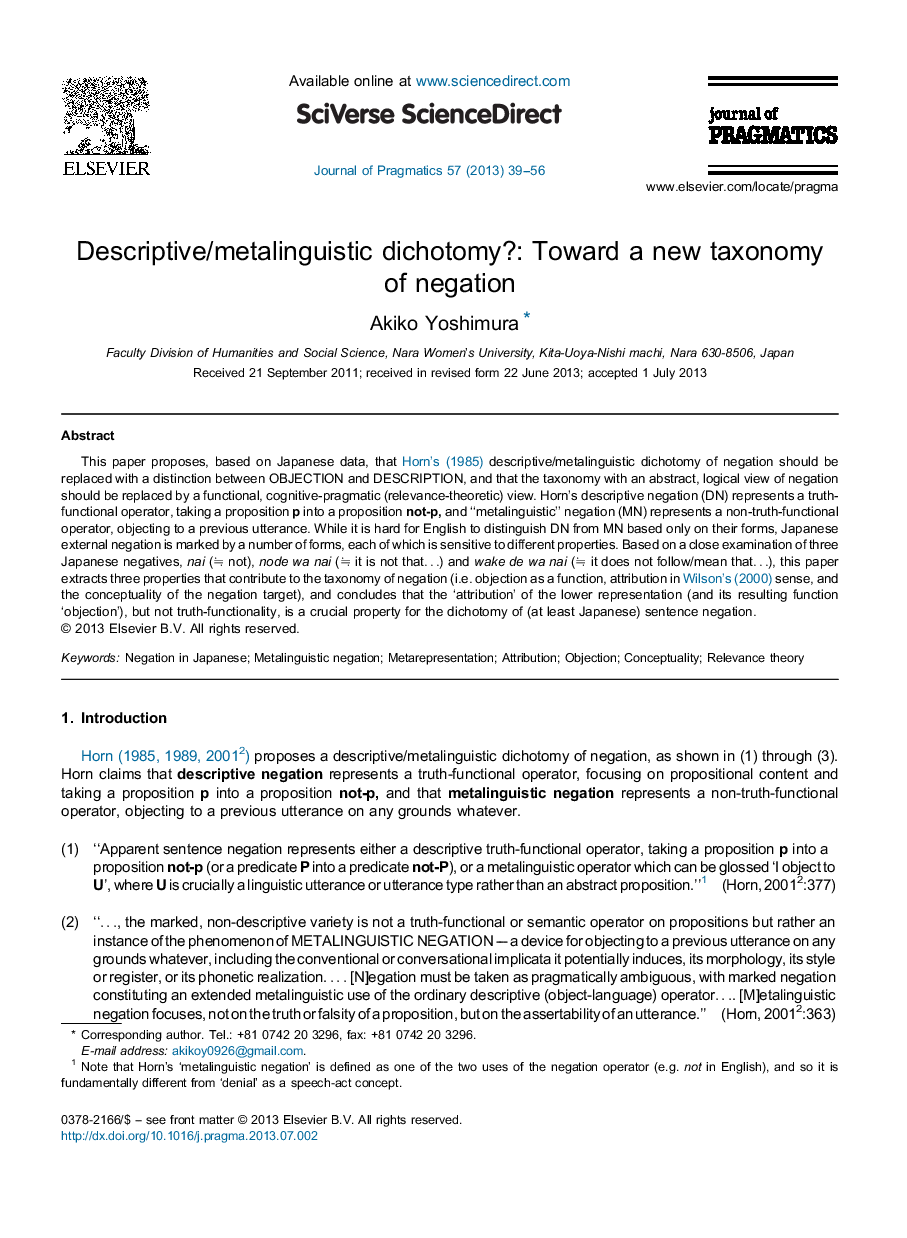| Article ID | Journal | Published Year | Pages | File Type |
|---|---|---|---|---|
| 932828 | Journal of Pragmatics | 2013 | 18 Pages |
•In Japanese, internal negation is marked by nai and external negation is marked by node wa nai and wake de wa nai.•The crucial dichotomic property is not ‘truth-functionality’ but ‘attribution’ of the lower-order representations.•It results in the functional distinction between Description and Objection.•Horn's DN/MN dichotomy should be replaced with the distinction between Description and Objection.•An abstract, logical view of negation should be replaced with a functional, cognitive-pragmatic view.
This paper proposes, based on Japanese data, that Horn's (1985) descriptive/metalinguistic dichotomy of negation should be replaced with a distinction between OBJECTION and DESCRIPTION, and that the taxonomy with an abstract, logical view of negation should be replaced by a functional, cognitive-pragmatic (relevance-theoretic) view. Horn's descriptive negation (DN) represents a truth-functional operator, taking a proposition p into a proposition not-p, and “metalinguistic” negation (MN) represents a non-truth-functional operator, objecting to a previous utterance. While it is hard for English to distinguish DN from MN based only on their forms, Japanese external negation is marked by a number of forms, each of which is sensitive to different properties. Based on a close examination of three Japanese negatives, nai (≒ not), node wa nai (≒ it is not that…) and wake de wa nai (≒ it does not follow/mean that…), this paper extracts three properties that contribute to the taxonomy of negation (i.e. objection as a function, attribution in Wilson's (2000) sense, and the conceptuality of the negation target), and concludes that the ‘attribution’ of the lower representation (and its resulting function ‘objection’), but not truth-functionality, is a crucial property for the dichotomy of (at least Japanese) sentence negation.
